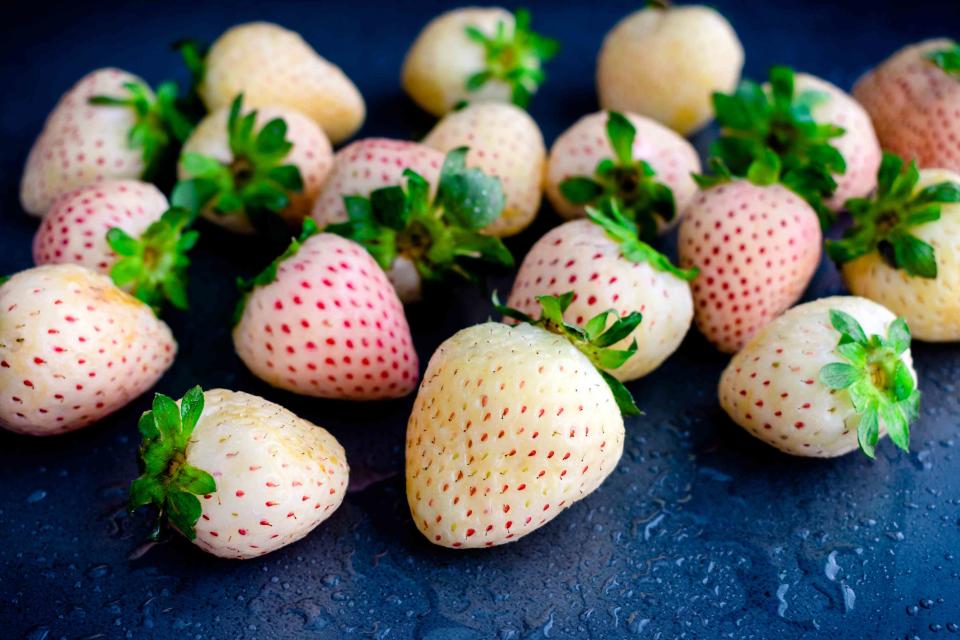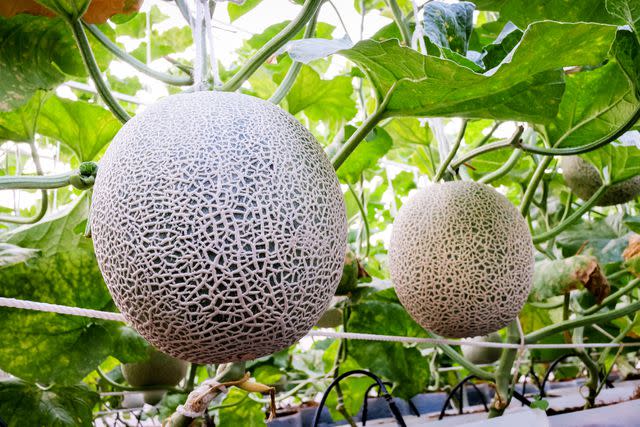These Strawberries Cost $780—Are They Worth It?
The Japanese kokota, awayuki, and pearl white are now available to Americans — if you can afford them.

Candice Bell / Getty Images
Produce is expensive these days, but these luxury fruits are on a whole other level.
Ikigai Fruits — a new retailer of hard-to-find, luxury Japanese fruit — now ships its so-called “cream of the crop” to the United States: flawless strawberries, oranges, and melons in Pantone-ready hues packaged like precious gems.
Unlike that tempting yet seemingly overpriced bushel of organic strawberries at Whole Foods, Ikigai’s fruits are priced more like Michelin-starred meals. But that’s no big surprise, given that luxury fruit is a whole thing in Japan. (Over there, Sembikiya — with more than 10 stores in Tokyo — is considered the Tiffany of fruits.) With the culture placing supreme importance on seasonality and gift-giving, it’s not uncommon for the Japanese to offer luxury fruit to close friends and family during the gifting seasons of Ochūgen and Oseibo.
Related: A new luxury fruit retailer, Ikigai, is now shipping luxury Japanese fruits to the United States.
Kotoka strawberries, the bright-red and symmetrical strawberries from Nara Prefecture, Japan, start at $89 for 500 grams. And millennial pink-hued Pearl White strawberries are currently $128 per pack. A variety set of 27 Kokota, Awayuki, and Pearl White strawberries goes for $780 — all before shipping.
Crown melons from Shizuoka Prefecture cost $128 each and are packaged in a chic gold-embossed black box that would make for a very nice gift. Growers hand-pollinate, hand-water, massage, and polish the melon before a selective harvest. There are also strict standards: An analysis of sugar content, flavor, ripeness, and appearance is always conducted. Once the light green interior is sliced, the fruit offers a sweet, juicy dessert experience with minimal effort.
Are these opulent fruits worth it? Well, that depends on your budget. Grown, picked, and packaged for the optimal visual and taste experience, these treats take the work and guessing game out of picking a nice package of strawberries. You’re paying for a service, experts’ time and effort, and a specialty product.

Tanawut Punketnakorn / Getty Images
Some Japanese melons, like the crown melon in Shizuoka Prefecture, are revered not only for their taste, but also for their perfectly symmetrical appearance.The cultivation of the fruits is painstaking, requiring hours upon hours of constant monitoring by private farmers. The growing process is typically done manually, with some methods requiring hand pollination or even the shading of each individual fruit — where farmers place a hat of sorts as protection from too much sun. The exclusivity and rarity of these fruits all add to the cost. All of them are shipped overnight, with FedEx rates hovering at around $40 within the continental U.S.
“There’s a reason some of these fruits cost hundreds of dollars,” Ikigai says. “Each fruit must meet incredibly high standards to make it to market — sugar content, shape, size, and texture, to name a few. To reach these standards, our farmers employ rigorous quality control measures. Only the cream of the crop make the cut, which is why these fruits are so rare and treasured.”
Related: 12 Fruit Crisp Recipes for Every Season
Americans spend extravagant money on all types of consumables — wine, lattes, pastries, beef — why not fruit?
Those who want to stick to a tighter budget while still getting in on the hype have a few other options. Oishii, known as the world’s first omakase berry, grows at indoor vertical farms in New Jersey. Two varieties of berries — omakase berries and koyo berries — are seasonal year-round and sold in transparent trays to showcase their bright color and freshness. Once $50 a pack, Oishii berries have scaled and are now typically around $10-$11 per six-pack on the East Coast.
For a complete luxury fruit dupe, look no further than American supermarket favorite Driscoll’s, which breeds rosé strawberries and rosé raspberries, available seasonally. The lighter-hued fruits are packaged more like conventional produce and appear under-ripe in their light pinkness —but the blush color is just an aesthetic, and the summer berries should be brimming with juices. Florida-based Wish Farms also offers pink strawberries, about $5 for 10 oz at most supermarkets.
For more Food & Wine news, make sure to sign up for our newsletter!
Read the original article on Food & Wine.

